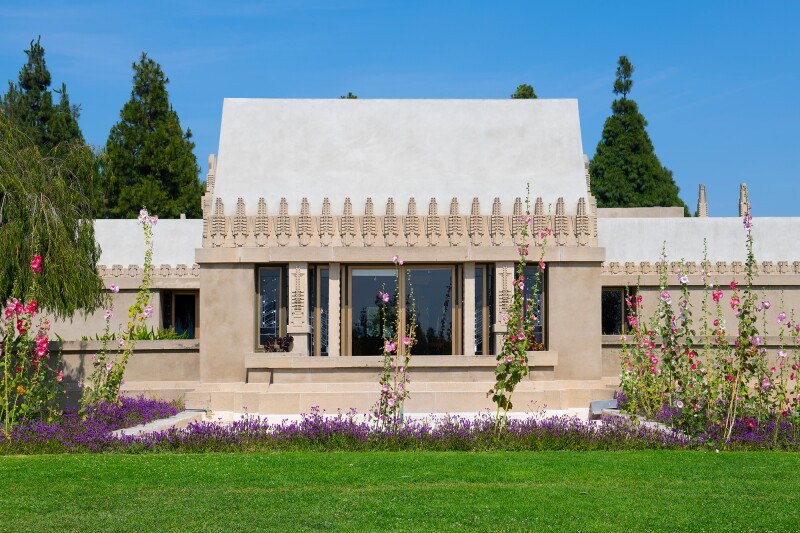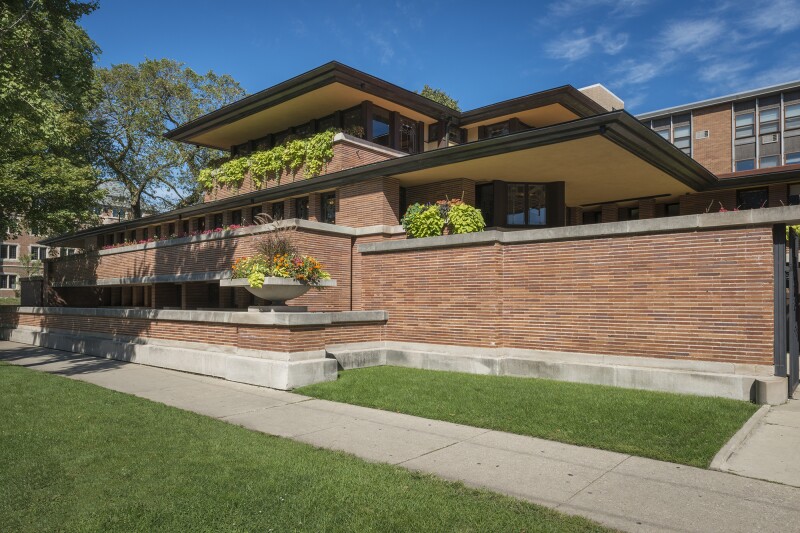UNESCO recognized Frank Lloyd Wright on July 7 by adding eight of the American architect’s most iconic buildings—including Fallingwater in Mill Run, Pennsylvania, the Solomon R. Guggenheim Museum in New York City, and Taliesin West in Scottsdale, Arizona—to its World Heritage List.
The United Nations’ cultural organization meets each year to determine which man-made buildings and areas of outstanding natural beauty will be added to the UNESCO World Heritage List, which now includes more than 1,000 sites in 167 countries. In order to receive the coveted designation, each nominated site must be deemed to have “outstanding universal value” of historic, cultural, or environmental significance.
Combined as “The 20th-Century Architecture of Frank Lloyd Wright,” the other buildings in the site include the Unity Temple in Oak Park, Illinois; Frederick C. Robie House in Chicago; Taliesin in Spring Green, Wisconsin; Hollyhock House in Los Angeles; and the Herbert and Katherine Jacobs House in Madison, Wisconsin.
Related Where to Vacation in a Frank Lloyd Wright Home
Wright was a prolific architect responsible for designing more than 500 public buildings and private homes in the United States in the first half of the 20th century, but these eight buildings were singled out for best reflecting the “organic architecture” developed by Wright, “which includes an open plan, a blurring of the boundaries between exterior and interior and the unprecedented use of materials such as steel and concrete,” according to a statement from UNESCO.
The 43rd session of the World Heritage Committee continues until July 10, 2019, in Baku, Azerbaijan. So far this year, the convention has also awarded UNESCO World Heritage status to Italy’s Conegliano and Valdobbiadene hills, home to its sparkling wine prosecco, and the Buddhist temple complex of Bagan in Myanmar.
It is significant that Wright’s work was added to the World Heritage List, which is typically dominated by natural landmarks like the Grand Canyon and ancient sites like the Acropolis. In fact, the only other 20th-century architectural works to be previously inscribed include a collection of work by the Swiss French architect Le Corbusier that was added in 2016 and several sites from the 20th-century Bauhaus movement in Germany in 2017. Of the 24 UNESCO sites in the United States, this marks the first time modern U.S. architecture has received a designation.
Related Where to Celebrate 100 Years of Bauhaus in Germany This Year
Here’s how you can visit each of these eight culturally significant buildings throughout the United States:

The Guggenheim’s design is as famous as the collection of art it contains.
Photo by Reno Laithienne/Unsplash
Solomon R. Guggenheim Museum
New York City
Easily Wright’s most iconic work, this modern and contemporary art museum on New York’s Upper East Side is defined by its unique spiral shape that brings visitors upwards through the gallery toward a glass ceiling. Opened in 1959—the same year Wright died—the museum is open to the public year round for self-guided tours of the exhibitions. From $25 per person, guggenheim.org
Fallingwater
Mill Run, Pennsylvania
Designed in 1935 as a weekend home for a prominent Pittsburgh family, Fallingwater’s most recognizable feature (pictured at top) is its sandstone terraces cantilevered over a waterfall on the property. Eventually opened to the public as a museum in 1964, it is considered to be one of the best examples of the way Wright’s organic style of architecture blended in with nature. Tours are available of the house between March 9 to December 31 and range from one-hour guided house tours to three-hour experiences that conclude with brunch or sunset hors d’oeuvres on the terrace on special dates in the summer and early fall. From $30 per person, fallingwater.org

Hollyhock House is the first UNESCO site in Los Angeles.
Photo by Shutterstock
Hollyhock House
Los Angeles, California
Finished in 1921, the Hollyhock House is one of the first of many commissions Wright took in California. Built as a private home for oil heiress Aline Barnsdall, the first UNESCO World Heritage site in Los Angeles completed a four-year $4.3 million renovation in 2015. A variety of tours—including self-guided and docent-led ones—are offered throughout the year. $7 per person, barnsdall.org
Unity Temple
Oak Park, Illinois
Completed early in Wright’s career in 1908, the Unity Temple is located west of Chicago in the town of Oak Park, a short walk around the corner from Wright’s home and studio. This Unitarian Universalist church is a highlight of Wright’s for several reasons—it is not only one of the first public buildings built in the United States with an exposed concrete exterior but also one of the greatest examples of Wright’s prairie era, which relied on strong horizontal lines that recalled the landscape of the Midwest. Restored in 2017 for $25 million, the Unity Temple is now open for both guided and self-guided audio tours of its interiors every day of the week except Sunday. From $12 per person, flwright.org

The Robie House is a prime example of Wright’s early prairie style.
Photo by Marek Lipka-Kadaj / Shutterstock
Frederick C. Robie House
Chicago, Illinois
Considered by the Frank Lloyd Wright Trust to be the most famous of Wright’s prairie houses, this 1910 property is located near the University of Chicago’s campus on the city’s south side. Originally built for local businessman Frederick C. Robie and his family, it changed ownership many times over the years. In March 2019, it reopened to the public, after an $11 million renovation project to restore the home to its original grandeur. Visitors can now take a 30-minute audio walking tour or more in-depth 50- or 90-minute guided tours of the house. From $18 per person, flwright.org
Taliesin
Spring Green, Wisconsin
Work on this 800-acre estate began early in Wright’s career and continued for several decades. The expansive retreat in the hills of the Wisconsin River valley west of Madison includes the architect’s 37,000-square-foot home, as well as his studio, school, and many more buildings. Taliesin Preservation offers a variety of tours of the property, from a two-hour house tour to a four-hour tour of the entire estate, including Tan-y-deri, the home Wright built for his sister. From $56 per person, taliesinpreservation.org

Taliesin West was Wright’s winter home and where he designed many of his later buildings.
Photo by EQRoy / Shutterstock
Taliesin West
Scottsdale, Arizona
Wright established his winter residence at Taliesin West in the foothills of the McDowell Mountains in 1937, drawing inspiration for his design from the colors and materials of the surrounding desert landscape. The property now serves as the headquarters of the Frank Lloyd Wright Foundation. The School of Architecture at Taliesin will close at the end of the spring 2020 semester, but that will not prevent tourists from visiting the site. Guided tours are available year round and range from a one-hour overview of the house and its grounds to a nearly three-hour behind-the-scenes tour, which includes a mid-morning tea and snacks in the Taliesin West Dining Room. From $25 per person, franklloydwright.org
The Herbert and Katherine Jacobs House
Madison, Wisconsin
Built in 1936 for just $5,000, “Jacobs I,” as it is more commonly known, is considered to be the first of Wright’s Usonian houses. Derived from “United States of North America,” Usonia is the term Wright used to describe his style of affordable architecture that relied on natural materials like stone and wood and featured glass curtain walls to let the outside in. Wright built more than 140 Usonian homes, including a second house for the Jacobs family, but this early model is definitive of the style’s simplicity and open concept that went on to be used in many American ranch style houses. Unlike the other Frank Lloyd Wright UNESCO sites, the Jacobs house is still privately owned so tours must be scheduled in advance online. Tours are available by appointment only, usonia1.com
The Associated Press contributed to this report. This article originally appeared online on July 8, 2019; it was updated on January 29, 2020, to include current information.
>> Next: How Buffalo Transformed Its Famous Architecture for a New Era











